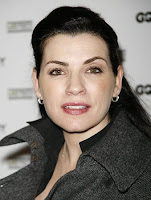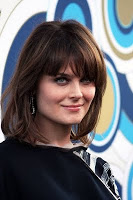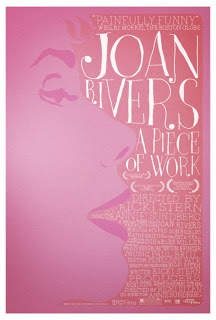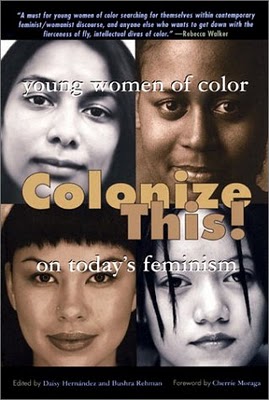One of the reasons I like the television series
Bones is that women are doing well there, something you can’t say of
Game of Thrones,
The Borgias or
Camelot or the many other shows where women are de rigeur decoration.
I don’t know if it’s occurred to filmmakers, but they’re a lot like museum curators who keep the work of women artists in their basements and then claim women are well represented within their four walls.
And then there’s
Mary McCormack as the eccentric and poignant witness protection agent in the series
In Plain Sight. She’s so genuine you think you’ve met her.
All to the good, but on the more problematic side, in eleven major television series corpses are the real stars of eight of them. And in
The Borgias and
Game of Thrones women are reduced to barn animals, while they’re chic accessories in some of the
CSI,
Law and Order, and
NCIS shows.
But cameras have minds of their own. They gravitate towards actresses like
Cote de Pablo, who is also a recording artist, in the original
NCIS series. She gets more out of her role by underacting than her showier colleagues, and the producers are often obliged to team her up with the equally understated
Mark Harmon, the show’s magnetic star.
 |
| Julianna Margulies |
It’s to the great credit of actresses like Stephanie March, Diane Neal, Marg Helgenberger, Emily Procter, Mariska Hargitay and quite a few others that their presence transcends the weak hands they’re dealt by directors, writers and producers. They illuminate their series in spite of the best intentions of the director to contain them. March, for instance, in episode after episode of Law and Order stood out from the ensemble because of her gravitas and aura of integrity. As for Helgenberger, the camera celebrates her no matter what hand the producers deal her. And who wouldn’t rather follow Procter into the jaws of hell than the show’s star, the one-note David Caruso? The same may be said for reserved Alana de la Garza, who first appeared in CSI: Miami, went on to Law and Order in New York and now plays in its spin-off, Law and Order: LA.
What many of these women have in common is a restraint we used to assign to laconic Western stars like
Gary Cooper and
James Stewart, a sense that while they have no wish, in spite of their beauty, to fill a room, it would be ill-advised to step on their toes. They are in many ways women of the century, liberated in spite of society’s hesitancy to license their liberation.
If you compare them to the women stars of the 50s, you’ll see that they’re more like
Humphrey Bogart
and
John Garfield than Barbara
Stanwyck and Ida
Lupino. Their feminity has a touch of the divine, and I’m not talking about looks, I’m talking about empowerment. These actresses, like
Lena Headey in
Game of Thrones, should be leading armies, toppling empires, governing our destinies, not playing second fiddle to writers who evince a palpable inhospitality towards women.
 |
| Mary McCormack |
If we truly wanted to be a great nation the filmmakers could lead the way. But first they must acknowledge that the Marlboro Man could be a boob, his looks being no warranty of anything but Big Tobacco’s preconceptions, Anglo-centrism and misogyny.
NCIS: Los Angeles strikes a blow in the right direction by casting the memorable
Linda Hunt as director of operations, but the scriptwriters insist she parody herself like Caruso in
CSI Miami.
More promising, much more promising, is Mary McCormack In Plain Sight role. Here the script writer lavishes good lines on her, obviously with the sanction of the director and producer, and she emerges as the character who’s got your back, the one who cuts the bullshit.
The dazzling
Emily Deschanel as Temperance Brennan in
Bones has the benefit of the concept of the show as well as a co-star,
David Boreanaz, who steps aside graciously with much good humor. She also has an endearing cast of colleagues, not least
Tamara Taylor, her smart and funny boss, and
Michaela Conlin, Brennan’s quirky, in-your-face sidekick.
It’s strange that filmmakers freight good-looking male actors with their projections but continue to use women as floral design. Who, looking at
Lena Headey, could even think of her in
Game of Thrones as a one-dimensional meanie queen and incestuous lover of her brother, in this case the attractive
Nikolaj Coster-Waldau, who shone in the defunct and much lamented
New Amsterdam series?
Unfortunately beauty in a male-dominated society lends itself to incidentality. I wonder if this would be so of males in a female-dominated society. My mother in her paintings created a world inhabited entirely by women. She simply banished men. At the same time she introduced a hint of androgyny. I suspect we may be heading as a species toward androgyny.
But in the meantime I think much evil in the world, including terrorism, is rooted in the hatred and fear of women. In
The Borgias this emerges cruelly in the treatment of
Holliday Grainger as Lucrezia by her boorish husband Giovanni Sforza. If she was indeed a poisoner, one can easily forgive her. One wishes him the best poisons in Italy.
The question that keeps bothering me as I consider these actresses and how they’re cast is simply this: Don’t the filmmakers see them, I mean really see them? I guess not. It’s reminiscent of the poet
Randall Jarrell’s unforgettable poem, “A Sad Heart At The Supermarket,” in which a shopper wonders why the bag boy doesn’t really see her.
Didn’t they cast a chubby
Richard Burton as the famously athletic Alexander the Great in 1956? Would they have cast a chubby woman as Olympias? And if they wouldn’t think of
Dolph Lundgren or
Jason Statham as wimps, why in hell would they think of Headey in that way? And who but an idiot would mess with
Eva Green in
Camelot? Grainger looks much less dangerous—indeed she looks angelic—but by episode three of
The Borgias she has already shown her goon of a husband she is nobody’s chattel. His leg is broken and worse is undoubtedly in his future.
The problem seems to be that the camera all by itself, with little help from the cinematographer, sees what the filmmakers can’t see. Do Headey, Green and Helgenberger look like anybody’s sweetie pie? True, Boreanaz and Caruso don’t treat Deschanel and Procter like sweetie pies, but that’s only because they know the camera can’t wait to quit them in order to linger on the women, so there’s no use being churlish.
I don’t think filmmakers and museum curators live on my planet. The camera keeps offering forensic evidence that they keep dismissing like judges in a kangaroo court. They have lots of precedent, of course. History books have been doing it for millennia.
The filmmakers often treat beauty much as the army treats damage—they collateralize it. But you can fill the original
CSI set in Vegas with corpses, with
William Petersen, with
Laurence Fishburne, and
Matt Damon if you can get him, and Marg Helgenberger will still be the only one in the room. It’s not because of her beauty alone: it’s a presence, the projection of a high seriousness that it took far more action and gunplay for Gary Cooper to display in
High Noon.
What I’m talking about is the feminine principle and how the film industry goes to great lengths to marginalize it in the same way that the church devotes itself to paternalizing religion. The film industry has taken over where the church left off, handing out a sop here and there, but insisting on women as decor. There have been exceptions,
Milla Jovovich in science fiction action films and
Maggie Q in
Nikita most notably, but the overall picture is that of an industry striving for the appearance of gender equality but unable to embrace it. In a way, the film industry is struggling with what I posit as a root cause of terrorism, fear of women. Perhaps a society whose biggest industries are prisons and war has that much to fear from women.
Djelloul Marbrook blogs at www.djelloulmarbrook.com and is the author of two books of poetry (Far from Algiers, Kent State; Brushstrokes and Glances, Deerbrook Editions) and three novellas (Artemisia’s Wolf, Saraceno, and Alice Miller’s Room). A retired newspaper editor, he lives in New York with his wife Marilyn.







